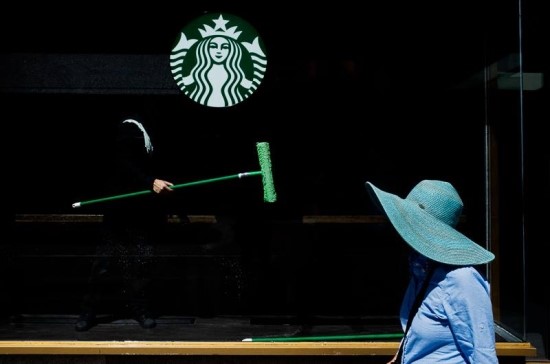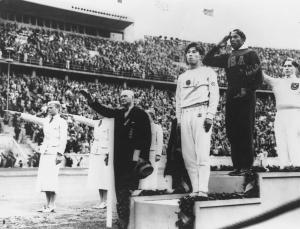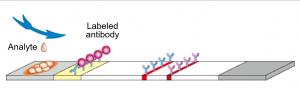|
The invention of the camera had a great impact on the art field: painters, who were fully committed to reproducing the still life images in brilliant colors and outstanding forms, faced great confusion. Naturally, painting no longer could adhere to the classical techniques based on realism, but instead developed into the distortion or reinterpretation of an object or a figure, and captured invisible or easily-missed moments.
Some artists understood the link between photography and painting and went out on the street with cameras. Aesthetics in the moments of daily life were recreated through the eyes of the photographers. So, the camera went beyond the means of recording and replaced the photographer’s eyes, giving photography a firm place in the art field. The photos taken give great impressions to those who appreciate them.
In this article, let's look into a few remarkable photographers who were lucky enough to capture impressive moments!
Henri Cartier-Bresson (France, 1908- 2004)
"There is nothing in this world that does not have a decisive moment.”
"There is a creative fraction of a second when you are taking a picture. Your eye must see a composition or an expression that life itself offers you, and you must know with intuition when to click the camera. That is the moment the photographer is creative,"
"Oop! The Moment! Once you miss it, it is gone forever."
The characteristics of his works could be summarized as: an exquisite attention to ordinary life that ultimately underlies human history, and the description of instant moments through the precise processing of space. He used Leica cameras, which were very suitable for taking snapshots, and pioneered the genre of street photography. He is considered a master of candid photography, and was one of the founding members of Magnum Photos, an agency that visually transcribes the things going on at the time, which led to photojournalism.
Robert Doisneau (France, 1912-1994)
“I took a mischievous pleasure in spotlighting society’s rejects, in both the people I took and my choice of background.”
He captured the lives of Parisians, including children and laborers, in realistic and romantic black-and-white photographs in the 1930s. During World War II, he released a series of photos showing the lives of Parisians. He is also considered a humanist photographer, as is Cartier-Bresson. Kiss by the Town Hall (1950), a photograph of a couple kissing on a busy Parisian street, is especially considered one of his masterpieces.
“I never noticed time passing, I was too taken up with the spectacle afforded by my contemporaries, that gratuitous, never-ending show for which no ticket is needed, and when the occasion arose, I offered them, in passing, the ephemeral solace of an image.”
Perhaps this is why he got to capture precious moments!
Willy Ronis (France, 1910-2009)
He lived at the same time as the two previous photographers, capturing life in post-war Paris and Provence. He belived that “The beauty is on the road” and appreciated natural beauty. His famous works include, The Lovers of the Bastille (Les Amoureux de la Bastille) (1957) and The Little Parisian (Le Petit Parisien) (1952).
As you can see, his works were recordings of ordinary daily images. People in his works never pose, they just exist the way they are. He reproduced the landscapes into poetic images.
Robert Frank (Switzerland & USA, 1924-2019)
”The Father of Modern Photography”
He went out on the streets with a camera from the time he was eighteen. His most notable work, the book titled The Americans (1958), earned him great fame for his fresh and nuanced outsider's view of American society, with a relentless demonstration of racism and twisted patriotism prevailing in the United States.
The main theme of his later works is “death”, which is a reflection of his children’s early deaths.
He did not look for a subject that fits the pre-set theme, but took pictures with a fresh viewpoint ever yday. He captured the isolation in a crowd, the cold indifference of closed windows and doors, the idolization of wealth, especially as signified by cars, highways, and the despair of everyday life. These photos represent the worries and ironies of American life.
Pau Buscató (Spain, 1975~)
Although he majored in architecture, he always wanted to be a photographer. He enjoyed capturing little ironies in everyday life. His early pictures were taken with minimum equipment, since he belived it is necessary to study from scratch. It has not been long since he started to create color photographs in 2014.
“Wrapped with a clean sense of visual aesthetics, his photographs usually blend real situations with imagined narratives that transform the nature of the actual scene. He intentionally looks for this friction between photographs and truth that allows him to “tell little photographic lies” or made-up stories, infusing his body of work with a touch of absurd realism.” https://www.paubuscato.com/about/
Looking at the works of street photographers, I start to think that they are struggling to overcome the challenges given to them. Thanks to their efforts, we can appreciate easily-missed moments in the form of great pictures!
Cameras capture the moments that are hardly detectable with our eyes. These are things we can capture only because we have cameras. How lucky are we to live in the age of cameras? Or, rather, are they the results of the long time of waiting by the photographers? In both cases, “luck” seems to be important! Such lucky pictures are appreciated throughout the times. Why not go out on the street right now and create your own artwork?
|










